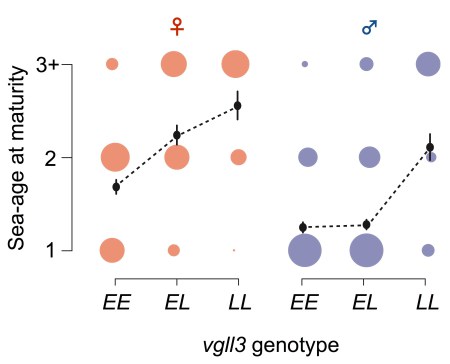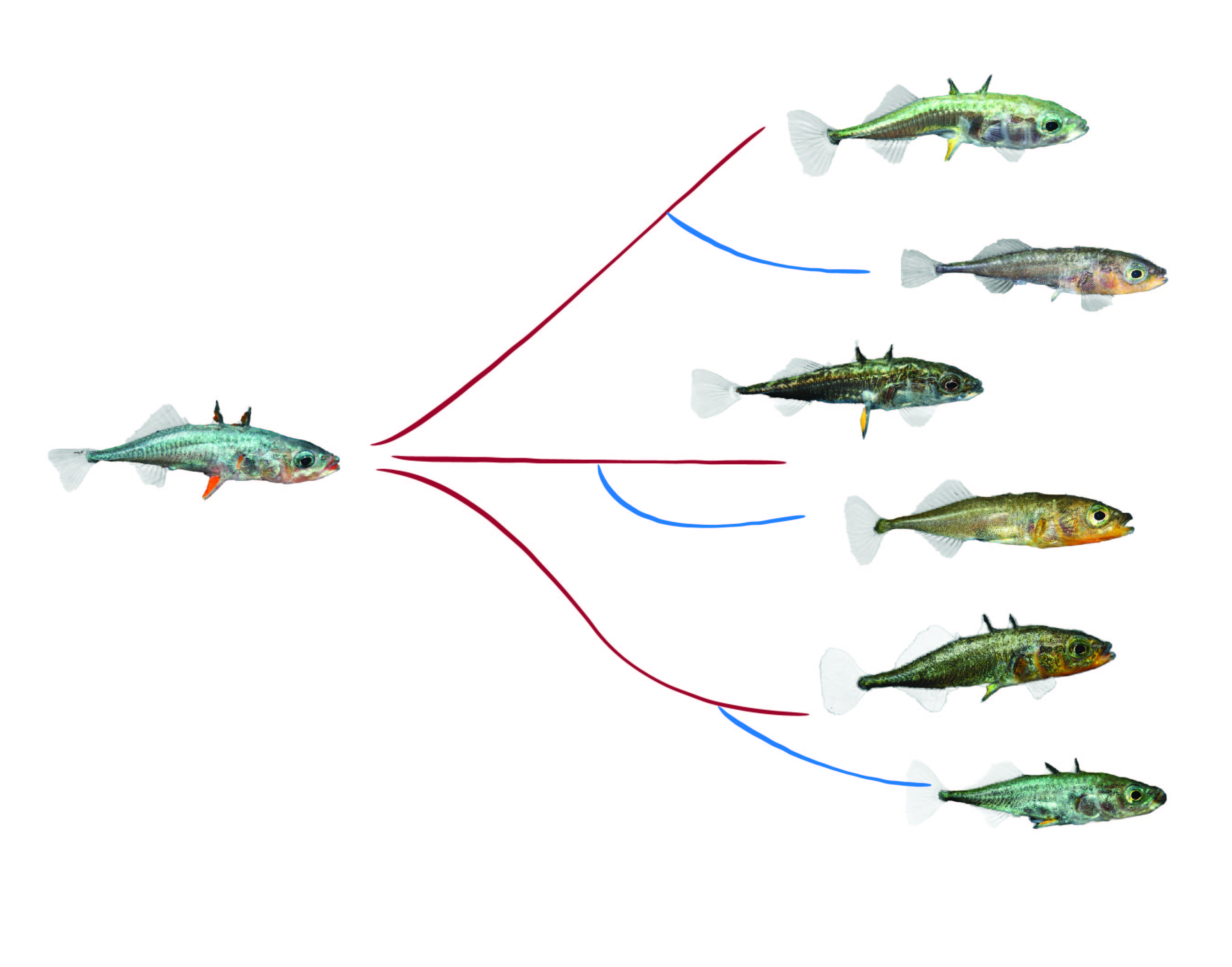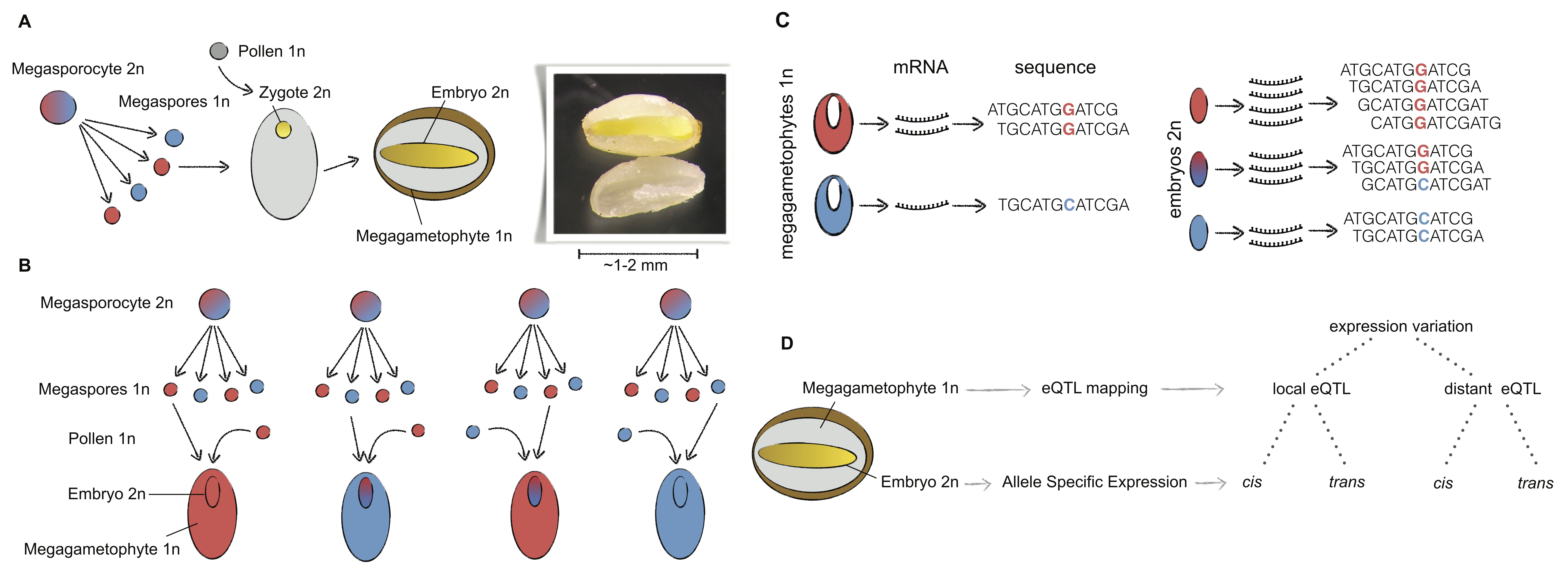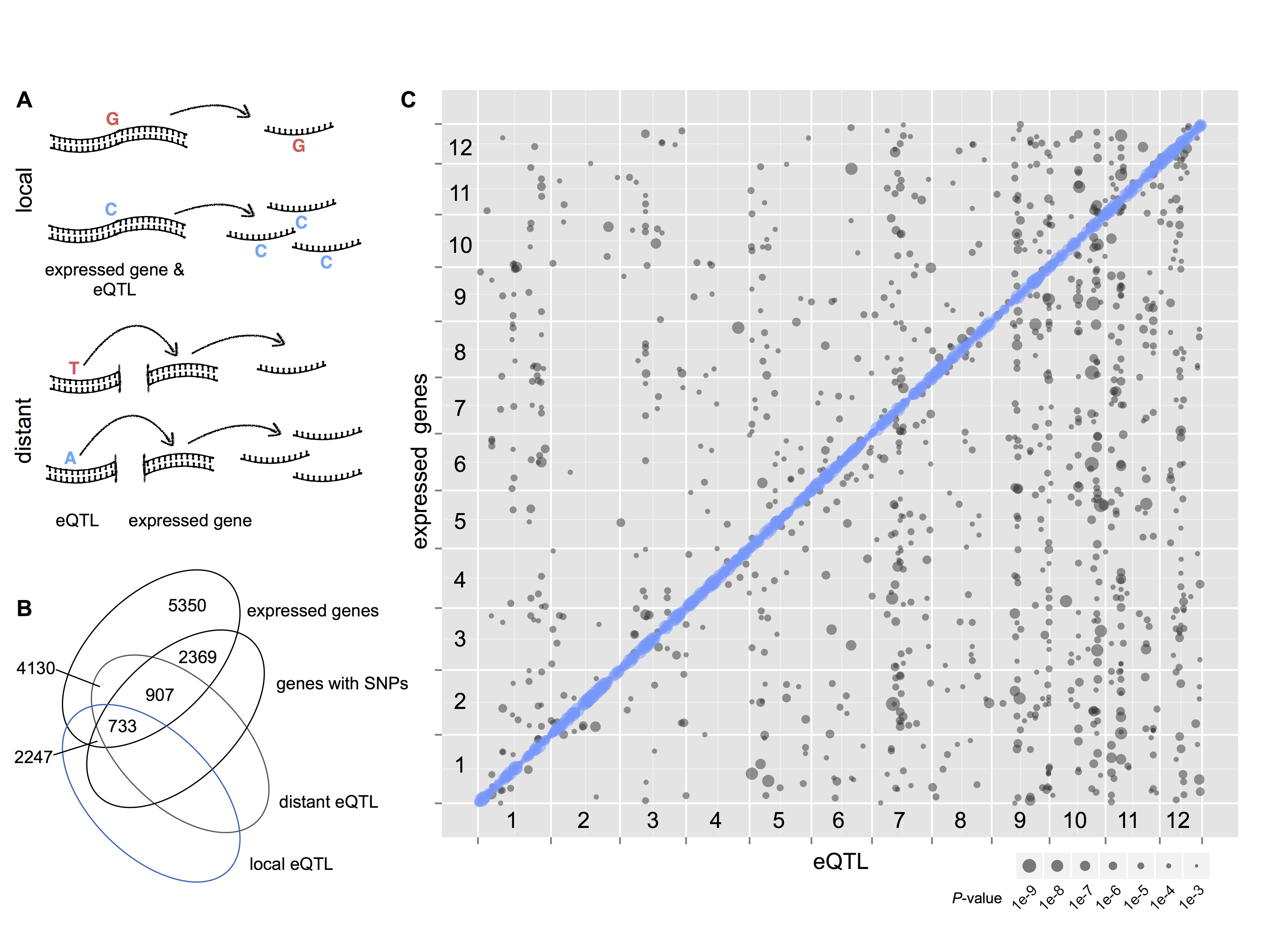Projects
Molecular mechanisms of sex-dependent dominance in age at maturity of Atlantic salmon
Trade-offs between life-history traits such as growth and reproduction are common in nature. One example of such evolutionary trade-off is seen in Atlantic salmon, which may grow to impressive size and produce thousands of eggs. Growing big in salmon is related to the number of years it spends at sea feeding. Feeding for a long period means potential for more offspring, but with the cost of increased risk of dying before reproducing. In Atlantic salmon this trade-off seems to be different for males and females - females tend to be bigger (and older) than males by the time the fish returns to its native river to spawn.
The genetic basis of age at maturity (when salmon return to spawn) has been mapped to a region of chromosome 25 containing the gene vgll3 (Barson, Aykanat et al. Nature 2015). Two alleles at vgll3 (E for early maturity and L for late) explain nearly 40% of variation in age at maturity. vgll3 is a transcription co-factor that is involved in fat tissue differentiation in fish and mammals, but how it could control for age at maturity is not known.

Female and male salmon maturation being controlled by the same vgll3 region produces sexual conflict - female fitness favours the L allele, while male fitness favours the E allele. This sexual conflict is resolved in heterozygous salmon by sex-dependent dominance: female fish that have both alleles mature later, while male heterozygous fish mature early (see figure). From an evolutionary perspective, the sex-dependent dominance observed in salmon is a mechanism for sexual conflict resolution that maintains adaptive variation within populations. My post-doc at the Primmer lab addresses the molecular mechanisms how sex-dependent dominance in vgll3 is encoded in the salmon genome.
Genetic basis of gene expression divergence in threespine sticklebacks
Variation in gene regulatory mechanisms play an important role in producing phenotypic variation that natural selection can act upon. Regulatory evolution seems to be tightly linked to both adaptive divergence of lineages as well as divergence of established species. We have a poor understanding of regulatory evolution during the very early stages of incipient speciation where adaptation-with-gene-flow still dominates, as it does in sticklebacks. These fish are a great model to study regulatory evolution at short divergence timescales as many of the freshwater environments sticklebacks have colonised were formed after the last glaciation only ~10 000 years ago, and the repeated nature of freshwater adaptation provides a system where we can study regulatory changes that have occurred in parallel in independent bouts of adaptation.
 Stickleback freshwater forms have evolved from marine ancestors in parallel
Stickleback freshwater forms have evolved from marine ancestors in parallel
During my post-doct at the Jones lab (FML/MPI Tuebingen), I characterised gene regulatory divergence between freshwater and marine sticklebacks in order to better understand the contribution of different regulatory mechanisms to adaptation and incipient speciation. To reach this goal I used whole-genome and mRNA sequencing combined with bioinformatics and statistical analyses to explore the ways in which gene expression divergence in the gill tissue is linked parallel freshwater adaptation.
eQTL architecture and expression evolution in conifers
Understanding the genetic basis of variation in phenotypes is a central goal in genetics, and essential for deciphering how genetic variation facilitates evolution. Current approaches allow the genetic tracking of complex genomic phenotypes in only a few species, limiting the ecological and evolutionary contexts where the effects of genetic variation can be studied.
During my PhD I developed an approach to study the genetic basis of gene expression variation that can be applied to conifer trees. Conifers are foundation species of boreal forests that are increasingly threatened by effects of climate change such as extreme weather and insect outbreaks. It is therefore timely that we develop tools and approaches with which we can study microevolutionary processes in conifer trees and assess the adaptive potential of populations.
 Conifer megagametophyte-embryo system to map eQTL
Conifer megagametophyte-embryo system to map eQTL
We developed an approach to map eQTLs based on analyzing gene expression in the haploid and diploid meiotic tissues of conifer seeds (see Papers). These tissues are conserved throughout the gymnosperms and therefore the approach opens the door for the genetic analysis of expression variation in a group of ~600 plant species.
 Spruce eQTL map built from haploid megagametophytes with RNAseq
Spruce eQTL map built from haploid megagametophytes with RNAseq
We used our approach to study the relationship between eQTL location and allele-specificity. An advantage of the approach is that it allows for a comprehensive characterisation of the genomic positions of mutations influencing the expression of genes and whether they were cis-acting (mutations in putative non-coding regulatory elements) or trans-acting (mutations in putative regulatory molecules such as transcription factors of regulatory RNA).
Our results point towards a number of interesting biological features of transcriptional variation in spruce. For example, we discovered genes that seemed to regulate their own transcription. We also discovered that co-evolution of different regulatory factors was often associated with a genomic architecture where the co-evolved factors were in close genetic linkage. We think that such an architecture might be favoured by natural selection as recombination between co-evolved regulatory factors has been shown to lead to extreme phenotypes - which is a form of genetic load. We observed that, overall, expression variation was associated with genes involved in stress-response, which may be a good sign for evolutionary potential in genes important for adapting to environmental changes.